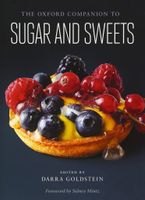Label
All
0
Clear all filters
🔥 Try our grilling cookbooks and save 25% on ckbk membership with code BBQ25 🔥
Appears in
Published 2015
Jam is a jellified preserve made with whole fruits and sugar. The fruit is boiled with sugar in solution until sufficient water has evaporated and a set has been achieved. As the mixture cools, the network of pectin molecules developed by the interplay between the sugar solution (measured by temperature and concentration) and acidity levels (measured by pH) ensures the formation of a firm yet soft jell, capable of supporting whole pieces of fruit. The fruit should be cooked but not overcooked, and the mixture should be sweet but not cloying. Overboiling and excessive reduction are to be avoided while ensuring that there is enough sugar and sufficient evaporation to allow long keeping. Some fruits, such as raspberries, apricots, or rhubarb, are macerated with sugar overnight to draw out the juice before cooking, but this preliminary step is not essential. The basic jam technique is to very slowly bring the softened fruit and sugar to a simmer in a nonreactive pan, stirring to make sure that all the sugar is dissolved as the fruit begins to cook. The mixture is brought to a rolling boil, where it is held until the setting point (approximately 220°F/104.5°C) is achieved. The set can be tested by dropping a spot of jam onto a cold plate, allowing it to cool, and gently pushing it with one’s finger. If the surface wrinkles, the jam is done. Froth may be skimmed off as the jam cools, or a little oil or butter added to make it disperse. While still hot (185° to 195°F/85° to 90°C), the jam should be packed into sterilized jars, which should be filled to the top and well sealed. Because jam thickens as it cools, mixtures containing large pieces of fruit should be allowed to stand for about 10 minutes before packing to improve the distribution of fruit pieces. Alternatively, the jars may be filled, sealed, and processed in a boiling water bath.
Become a Premium Member to access this page
Unlimited, ad-free access to hundreds of the world’s best cookbooks
Over 160,000 recipes with thousands more added every month
Recommended by leading chefs and food writers
Powerful search filters to match your tastes
Create collections and add reviews or private notes to any recipe
Swipe to browse each cookbook from cover-to-cover
Manage your subscription via the My Membership page
Best value
Part of
Advertisement
Related Recipes
-
-
-
-
Related Reference
-
-
-
-
Advertisement
The licensor does not allow printing of this title



